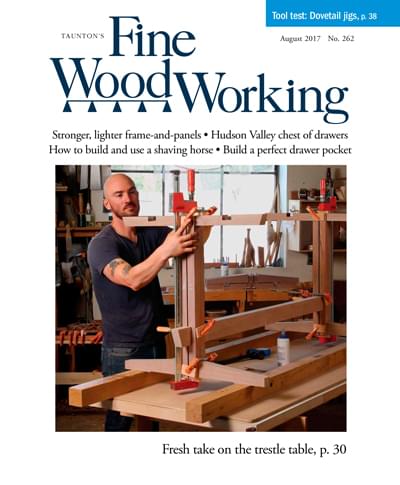Handplaning With Precision
You can use a smoothing plane for more than just smoothing.

Synopsis: A handplane is useful for much more than smoothing. In fact, Bob Van Dyke uses his No. 4 to create perfect edge joints on panel glue-ups, fix an uneven reveal around a door frame, correct gaps in mortise-and-tenon joinery, adjust miter joints, and flatten cupped, bowed, or twisted boards.
It was not until I started working with Will Neptune years ago that I began to appreciate the value of a systematic approach to working with a handplane. Until then, I had used one for smoothing and making pretty shavings, and completely missed the level of precision possible. By approaching planing tasks, including joinery, systematically, I’ve been able to work more accurately using just a single plane, my No. 4, whose small size lets me target specific areas effectively.
The key is to plan and count your strokes. Most plane shavings are around 1–3 thousandths of an inch thick—the average piece…
Start your 14-day FREE trial to continue reading this story.
Plus, access more than 1,900 in-depth articles and more when you become a member.
Start Your Free Trial NowAlready a member? Log In







Log in or become a member to post a comment.
Sign up Log in